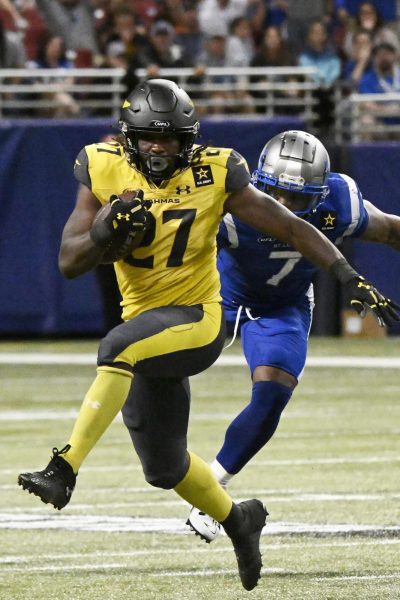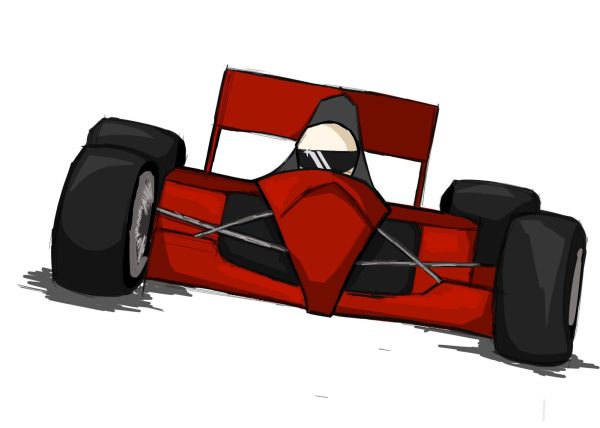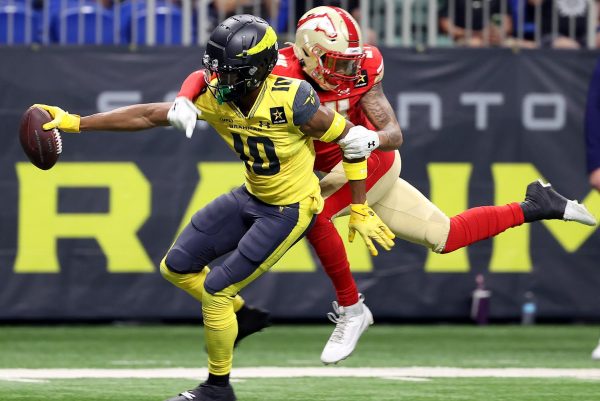Dome field advantage
March 8, 2022
With some teams having the luxury of playing indoors, the quarterback’s seasonal and career statistical averages seem to boost because of the advantages they inherit in enclosed stadiums. With some all-time great quarterbacks playing most of their career outdoors in adverse weather, others can benefit from playing in perfect and controllable temperatures. Although domed stadiums can seem merely a luxury for fans and should be played in no differently than outdoor stadiums, playing indoors enhances quarterback play and boosts their stats versus playing in uncontrollable environments.
Playing in a dome makes it easier for the QB to throw the football. Throughout the season — from late September to the end of January — the weather gets more uncomfortable for players and gets increasingly painful for the athletes. In the northern parts of the United States, football games are played in temperatures of less than 32 degrees and most of the time with the combination of rain, sleet, snow and heavy winds making it difficult to accurately throw a ball more than five yards down a field. With domed stadiums, however, the weather is controlled. Temperatures are kept between 66 and 68 degrees, with the body heat of the fans increasing it to around 70 degrees. With quarterbacks being warmer and without howling winds disrupting the throws they make, throwing inside an enclosed building is far easier and will earn the quarterbacks higher stats. Quarterbacks’ statistics tend to increase in domes because if the QB throws a catchable pass to the teammate, nothing else will interfere with the throw. However, playing outside introduces more unpredictability in every throw; not to make it sound like anyone can throw well in domed stadiums because it does take talent and skill to throw the football well anywhere. But as simple as it sounds, playing in domed stadiums rather than outdoor stadiums makes it easier for the quarterback to throw the football.
Having a domed stadium helps the home football team, even beyond the quarterbacks throwing. Obviously, the QB’s environment to throw in is easier, but the whole team plays better inside the dome. When there are more than sixty-thousand fans in an enclosed area, their fanatical cheering reverberates and makes it uncomfortable for the opposing team. Patrick Mahomes is a current top-tier quarterback in today’s NFL and is arguably the best current player in all of football. Mahomes plays for the Kansas City Chiefs, whose stadium is outdoors, and often plays in inclement weather. When Patrick Mahomes plays on the road in other teams’ domes, he struggles.
Mahomes played eight road games last season and three were played in domes. At the Los Angeles Rams with a 57.45% completion percentage, at the Las Vegas Raiders with a 75.56% completion percentage and at the New Orleans Saints with a 55.32% completion percentage. His mean average for those three games was 62.77%, while every other game outside a dome was 67.9%. Mahomes’ pass completion percentage in indoor stadiums ranged from 55.32% to 75.56%, while his outdoor percentage ranged from 51.16% to 80.77%. Though he did not throw the ball as well as he did outdoors, he still had a higher percentage of completed passes in his indoor game by 4.16%. With Mahomes’ completion percentage being 66.3% for the whole season, two of his dome games were very poor for his standards.
There are many other factors contributing to an opposing QB’s struggles in a dome even with controlled temperatures. For instance, crowd noise can affect a quarterback’s ability to call plays and he can easily get distracted with the cheering from the fans. Further, the controlled indoor temperature can also boost a quarterback’s confidence to ultimately hurt their passer-rating by not being cautious with every throw and risking bad passes. If an opposing QB can throw the football the same in any stadium and does not put the ball in harm’s way, then the stadium can become an advantage. However, if the opposing quarterback lets the stadium noise and overconfidence affect his play, the home QB has a major advantage.
Domed stadiums represent far more than luxurious environments to watch and play football games; they inherently inflate the statistical output of quarterbacks, regardless of era or talent level. Some all-time great quarterbacks and even modern-day quarterbacks take full advantage of this while other players play in 12-degree weather and 30 mph winds weekly. Playing in domes adds a completely different dynamic to the game for all NFL players, but it is the quarterback who stands the most to lose or gain from it. And perhaps that is one of the reasons they are scrutinized and celebrated as they are.
Don’t agree with this article? Send your counter-opinion to [email protected].











Gerald Flores • Mar 9, 2022 at 2:53 pm
Wonderful perspective. I believe that the opposing team defense may have a lot to do with the quarterback performance. Although noise has an effect on play, it is minimal compared to the defense of the opposing team. It would be interesting to see your formula applied to all quarterbacks. I always enjoy reading your articles. Congratulations great writing!